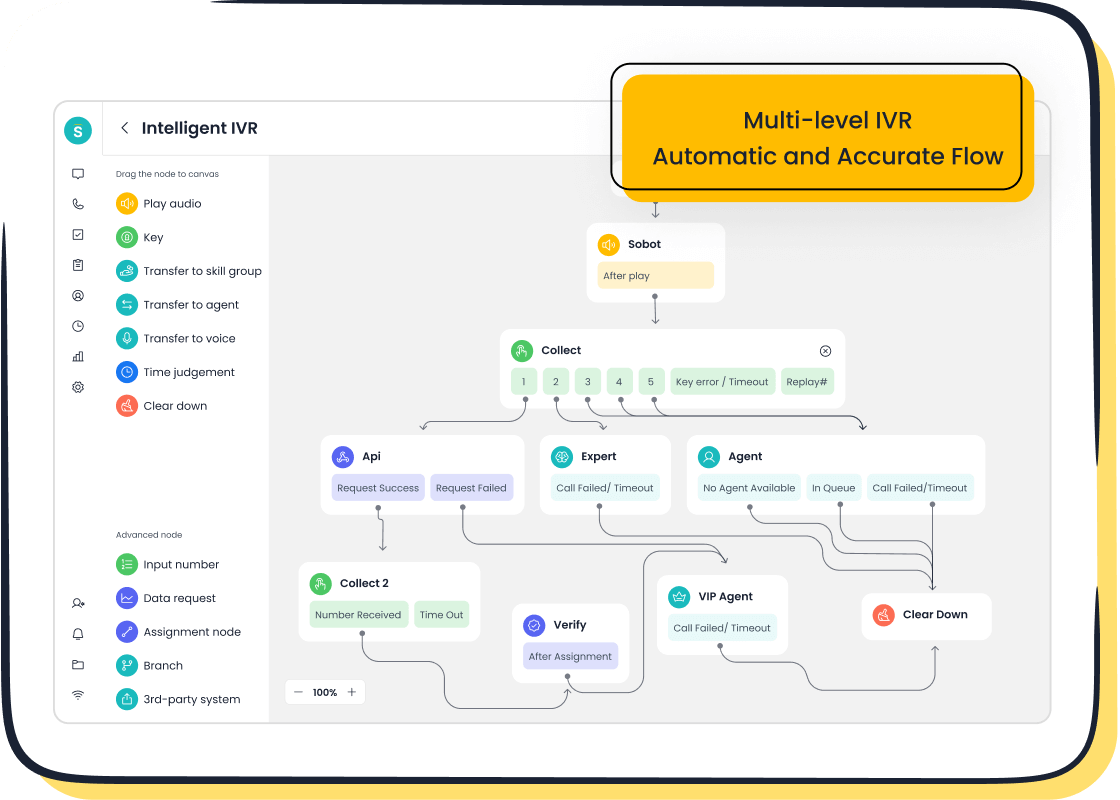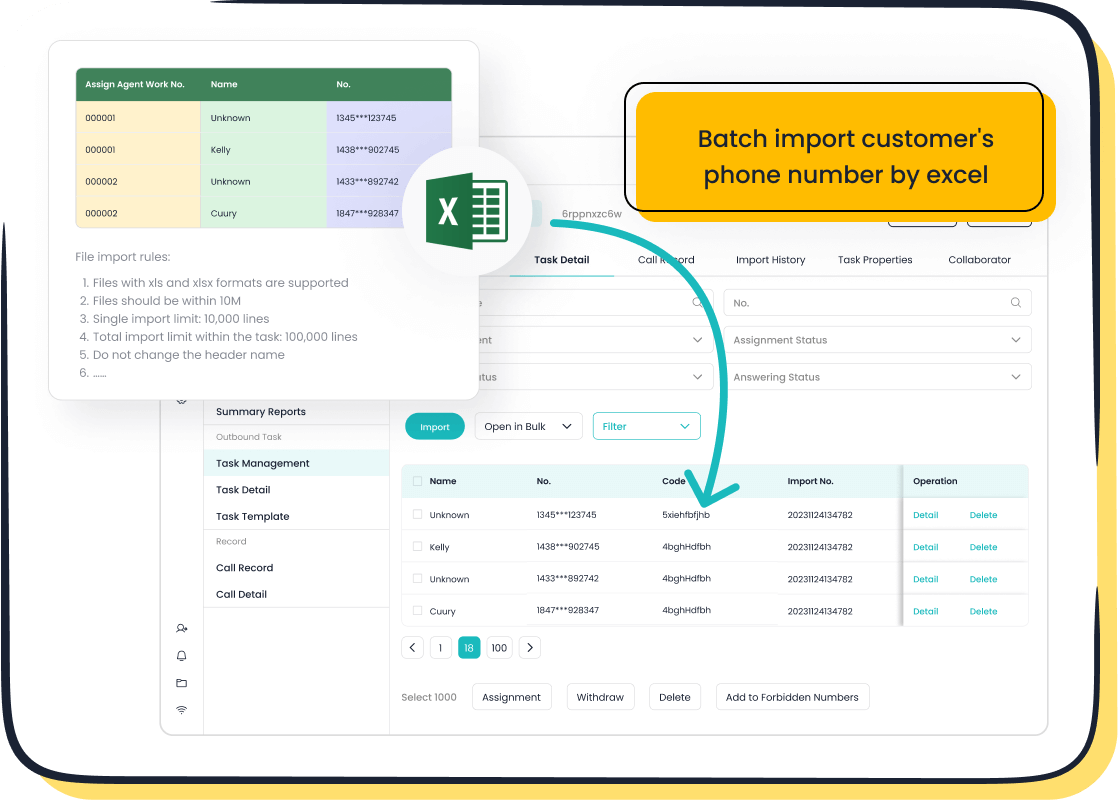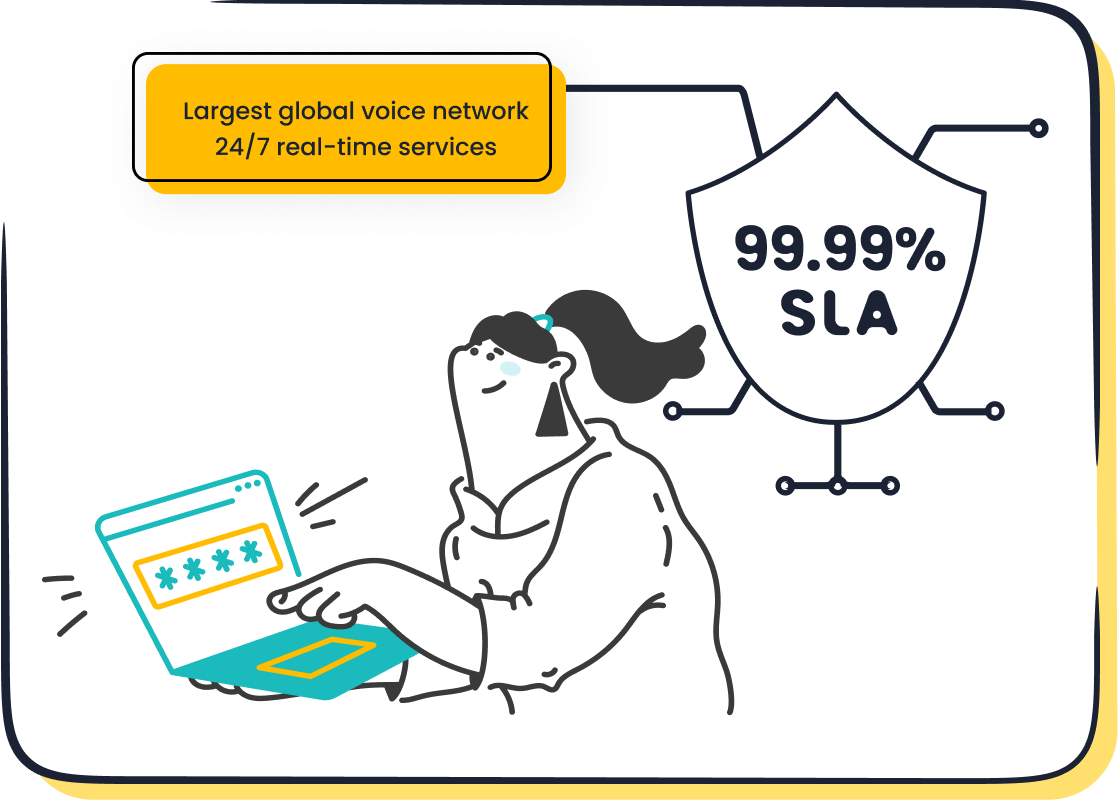First Contact Resolution Formula and Steps to Measure It

First contact resolution (FCR) measures how effectively your team resolves customer issues during the first interaction. The formula is simple:
FCR (%) = (Total Resolved Cases on First Contact / Total Cases) × 100.

High FCR rates reflect efficient customer service. They reduce follow-ups, save resources, and boost satisfaction. Research shows that every 1% increase in FCR improves customer satisfaction by 1%. In fact, 80% of service professionals now track FCR, up from 51% in 2018. Tools like Sobot’s Voice/Call Center help businesses achieve higher FCR by streamlining workflows and providing real-time insights.
What Is First Contact Resolution (FCR)?
Definition and Importance of FCR
What is FCR and why it matters in customer service.
First Contact Resolution (FCR) measures how effectively your team resolves customer issues during the first interaction. It reflects your ability to address concerns without requiring follow-ups. FCR is a critical metric in customer service because it directly impacts efficiency and satisfaction. High FCR rates mean fewer repeat contacts, which saves time and resources.
FCR also reduces customer effort, a key factor in creating positive experiences. For example, resolving an issue on the first call minimizes frustration and builds trust. This metric benefits your team as well. Agents feel more accomplished when they resolve issues quickly, which boosts morale.
| Benefit | Description |
|---|---|
| Reduces customer effort | Resolving issues on the first contact minimizes customer effort, leading to increased satisfaction and loyalty. |
| Improves employee satisfaction | Agents feel more accomplished when they resolve issues quickly, boosting their morale and job satisfaction. |
| Cuts down contact center costs | Fewer interactions are needed to resolve issues, reducing operational costs and additional staffing needs. |
| Increases customer retention | High FCR rates lead to stronger customer loyalty and improved long-term retention. |
| Enhances overall efficiency | Agents can handle more inquiries in less time, increasing productivity. |
| Boosts company reputation | Consistently resolving issues on the first contact improves the company’s reputation for delivering excellent customer service. |
The role of FCR in enhancing customer satisfaction and loyalty.
FCR plays a vital role in improving customer satisfaction and loyalty. Studies show that 9 out of 10 customers express dissatisfaction when FCR is not achieved. High FCR rates indicate effective issue resolution, which enhances the overall customer experience. This metric also links directly to customer satisfaction scores and net promoter scores.

For businesses, FCR is a cost-effective way to retain customers. Approximately 40% of customers switch companies due to poor FCR. By focusing on this metric, you can reduce churn and build long-term relationships. Tools like Sobot’s Voice/Call Center help businesses achieve higher FCR by streamlining workflows and providing real-time insights.
Common Standards for FCR
Industry benchmarks and variations across sectors.
FCR benchmarks vary by industry. The average FCR rate across all sectors is 70%. Retail leads with 78%, followed by insurance at 76%. Technology and telecom sectors have lower rates, averaging 65% and 61%, respectively. These variations reflect the complexity of issues handled in each sector.
- Average FCR rate across all industries: 70%
- Retail: 78%
- Insurance: 76%
- Technology: 65%
- Telecom: 61%
How FCR standards apply to call centers and omnichannel support.
In call centers, FCR measures how well agents resolve issues during the first interaction. It is a key performance indicator (KPI) that reflects operational efficiency. Omnichannel support adds complexity to FCR measurement. Customers may switch between channels, such as live chat and phone calls, to resolve a single issue.

Sobot’s Voice/Call Center simplifies FCR tracking across channels. Its unified workspace integrates customer data, enabling agents to resolve issues efficiently. Features like smart call routing and AI-powered voicebots further enhance FCR rates. These tools ensure consistent service quality, regardless of the channel used.
Understanding the FCR Formula

Breaking Down the Formula
Explanation of "Total Resolved Cases on First Contact."
The term "Total Resolved Cases on First Contact" refers to the number of customer issues resolved during the first interaction. This metric highlights your team's efficiency in addressing concerns without requiring follow-ups. For example:
- If your team resolves 650 inquiries out of 1,000 during the first interaction, the FCR rate is 65%.
Tracking this number helps you measure customer service performance across all channels, including phone, email, and live chat. It directly impacts your ability to calculate FCR accurately.
Explanation of "Total Cases" and its scope.
"Total Cases" includes all customer inquiries received during a specific period. This number encompasses every interaction, regardless of whether the issue was resolved on the first attempt. For instance, if your call center handles 1,000 inquiries in a week, that becomes your total case count. This figure provides the foundation for calculating FCR and understanding the scope of your customer service operations.
Examples of FCR Calculation
Simple numerical example to illustrate the formula.
To calculate first contact resolution, divide the number of resolved cases by the total cases, then multiply by 100. For example:
- If your team resolves 700 out of 1,000 inquiries on the first contact, the FCR rate is:
(700 ÷ 1,000) × 100 = 70%.
This simple calculation demonstrates how to measure FCR effectively.
Real-world application using Sobot's Voice/Call Center.

Sobot's Voice/Call Center simplifies FCR tracking with features like real-time monitoring and AI-powered voicebots. For example, a retail business using Sobot resolved 780 out of 1,000 inquiries on the first contact, achieving an FCR rate of 78%. The platform's smart call routing and unified workspace enable agents to handle inquiries efficiently, boosting FCR rates across industries.
Factors That Influence FCR
Agent training, tools, and customer behavior.
Several factors influence FCR performance:
- Agent Training: Well-trained agents resolve issues faster. Regular training improves problem-solving skills.
- Tools: Access to a robust knowledge base and advanced tools like Sobot's AI-powered Voicebot enhances efficiency.
- Customer Behavior: Clear communication from customers helps agents address concerns more effectively.
The impact of technology like AI and automation.
Technology plays a crucial role in improving FCR. AI and automation streamline workflows, reducing average handle time. For instance, Sobot's Voice/Call Center uses AI to analyze customer inquiries and route them to the right agent. This reduces repeat contacts and improves resolution rates. Automation also helps agents focus on complex issues, further enhancing FCR.

Steps to Measure FCR Effectively
Data Collection Methods
Using customer feedback surveys and post-call surveys.
To measure first call resolution accurately, you need reliable data collection methods. Customer feedback surveys and post-call surveys are among the most effective tools. These surveys allow you to ask customers directly if their issues were resolved during the first interaction. For example, you can send post-call surveys via email or SMS shortly after the interaction. Questions like, "Was your issue resolved to your satisfaction?" provide valuable insights into customer satisfaction and resolution rates.
In-app feedback is another method to collect data. It captures customer opinions immediately after the interaction, reducing recall bias. However, post-call surveys remain a popular choice due to their ability to benchmark FCR rates against industry standards. Contact centers with Voice of the Customer (VOC) programs have shown a 78.4% higher year-over-year improvement in FCR rates compared to those without such programs. This highlights the importance of collecting customer feedback consistently.
Leveraging tools like Sobot's Voice/Call Center for tracking.

Advanced tools simplify the process of measuring first call resolution. Sobot's Voice/Call Center, for instance, offers features like real-time monitoring and automated data collection. These capabilities help you track resolved cases and repeat contacts effortlessly. The platform also integrates customer feedback into its analytics, providing a comprehensive view of your FCR performance. By leveraging such tools, you can streamline data collection and focus on improving customer service.
Tools for Measuring FCR
Features to look for in FCR measurement tools.
When selecting tools to measure first contact success, prioritize features that align with your operational needs. Look for tools that offer:
- Real-time data tracking to monitor FCR rates.
- Integration with customer feedback systems for accurate insights.
- Analytics dashboards to identify trends and patterns.
For example, tools that track repeat call rates and customer satisfaction scores provide a clearer picture of your FCR performance. Comparing your FCR rate to industry benchmarks, such as 70-75% for phone support, helps you identify areas for improvement.
How Sobot's Voice/Call Center simplifies FCR tracking.
Sobot's Voice/Call Center excels in measuring first call resolution. Its unified workspace consolidates customer interactions across channels, ensuring no data is missed. Features like smart call routing and AI-powered voicebots enhance resolution rates by directing inquiries to the right agents. The platform also tracks metrics like repeat call rates and customer feedback, making it easier to measure first contact success. With Sobot, you can achieve higher FCR rates while improving overall customer experience.
Analyzing FCR Data
Identifying trends and patterns in FCR rates.
Analyzing FCR data helps you uncover trends and patterns that impact customer service. For instance, repeat call analysis can reveal common unresolved issues. A scenario where a customer calls to set up a product and succeeds indicates FCR achieved. However, cases involving follow-ups, like bill adjustments or service orders, show FCR not achieved. Comparing FCR rates across channels, such as phone and email, also highlights areas needing improvement.
Using insights to improve customer service processes.
Use FCR data insights to refine your processes. Root cause analysis identifies why certain issues require multiple interactions. For example, if repeat calls stem from unclear instructions, updating your knowledge base can resolve this. Tools like Sobot's Voice/Call Center provide actionable insights through analytics dashboards, enabling you to address gaps effectively. Continuous improvement based on FCR data ensures better customer satisfaction and operational efficiency.
Common Pitfalls in Measuring FCR
Misinterpreting Data
Confusing unresolved cases with repeat contacts.
Misinterpreting unresolved cases as repeat contacts is a common issue in measuring first call resolution. This confusion often arises when agents fail to document interactions accurately. For example, a customer may call back to clarify instructions, but the system might log this as a new case. Such errors distort your FCR metrics and make it harder to identify areas for improvement. Research highlights that cognitive biases also contribute to misinterpretation. Traditional methods, like relying on P-values, can lead to misunderstandings. Viewing P-values as compatibility measures instead of definitive outcomes can reduce errors and improve clarity.
Overlooking customer feedback in FCR analysis.
Customer feedback is a vital component of accurate FCR measurement. Ignoring this input can result in incomplete data and missed opportunities for improvement. Post-call surveys and feedback forms provide insights into whether customers consider their issues resolved. For instance, a case marked as resolved by an agent might still leave the customer dissatisfied. Tools like Sobot’s Voice/Call Center integrate feedback into analytics, ensuring a more comprehensive view of your customer service performance.
Inconsistent Data Collection
Challenges with incomplete or inaccurate data.
Inconsistent data collection undermines the reliability of FCR metrics. Clear definitions and criteria are essential for tracking FCR accurately. Without them, confusion arises over what constitutes a resolved case or the appropriate time frame for resolution. Challenges include:
- The need for a specific benchmark time frame to determine resolution.
- The importance of collecting customer feedback during and after the resolution process.
- The reliance on auditor perception, which introduces subjectivity.
Incomplete data can lead to flawed conclusions, making it difficult to improve your call center operations. Sobot’s tools address these challenges by automating data collection and standardizing processes.
Importance of standardized processes for tracking.
Standardized processes ensure consistency in FCR measurement. For example, defining clear criteria for resolution and training agents to follow them reduces variability. Automated systems, like Sobot’s Voice/Call Center, streamline tracking by integrating customer interactions across channels. This approach minimizes errors and provides accurate, actionable insights.
External Factors Affecting FCR
Adjusting for anomalies like system outages.
External factors, such as system outages or high call volumes during peak periods, can skew FCR metrics. These anomalies require adjustments to ensure accurate measurement. For instance, a sudden spike in unresolved cases during a system outage does not reflect your team’s performance. Industry data shows that improvement potential varies across sectors, with retail having a 7% gap between average and top performer FCR rates. Adjusting for such anomalies helps you focus on genuine performance trends.
| Industry | Average FCR Rate | Top Performer Rate | Improvement Potential |
|---|---|---|---|
| Retail | 78% | 85% | 7% |
| Insurance | 76% | 82% | 6% |
| Technology | 65% | 75% | 10% |
| Telecom | 61% | 70% | 9% |
| Healthcare | 72% | 80% | 8% |
| Financial Services | 70% | 78% | 8% |
How Sobot ensures reliable data collection with its 99.99% SLA.
Sobot’s Voice/Call Center ensures reliable data collection with its 99.99% system uptime. This stability minimizes disruptions, allowing you to track FCR accurately even during high-demand periods. Features like real-time monitoring and AI-powered analytics help you adjust for anomalies and maintain consistent metrics. By leveraging Sobot’s tools, you can enhance your customer service operations and achieve higher FCR rates.

Tips to Improve FCR Rates

Enhancing Agent Training
Focus on problem-solving and communication skills.
Improving first call resolution starts with equipping agents with strong problem-solving and communication skills. Regular training sessions focused on real-world scenarios help agents handle complex issues effectively. For example, implementing a quality assurance framework ensures agents meet FCR goals consistently. Encourage agents to share experiences from actual calls to build a collaborative and knowledgeable team. Regular feedback and coaching sessions also refine their skills, enabling them to resolve issues faster. Studies show that continuous coaching improves FCR rates by up to 15%, making it a vital strategy for success.
Providing agents with access to knowledge bases.
A well-organized knowledge base empowers agents to find accurate information quickly. This reduces resolution time and enhances customer service quality. Tools like Sobot’s Voice/Call Center integrate knowledge bases into a unified workspace, allowing agents to access resources during calls seamlessly. By providing agents with updated FAQs, troubleshooting guides, and product details, you can ensure they resolve customer inquiries efficiently. This approach not only boosts FCR rates but also improves the overall customer experience.
Streamlining Processes
Reducing customer effort through efficient workflows.

Simplifying workflows reduces customer effort and improves satisfaction. Start by analyzing common customer issues and streamlining processes to address them effectively. For instance, smart call routing, a feature in Sobot’s Voice/Call Center, directs inquiries to the most qualified agents. This minimizes transfer rates and ensures faster resolutions. Efficient workflows also allow agents to focus on resolving issues during the first interaction, enhancing FCR rates and reducing operational costs.
Implementing self-service options for common issues.
Self-service options, such as chatbots and FAQs, empower customers to resolve simple issues independently. This reduces the volume of inquiries requiring agent intervention. Sobot’s AI-powered Voicebot, for example, handles repetitive queries, freeing agents to focus on complex problems. Businesses using self-service tools report a 20% increase in FCR rates. These solutions not only improve efficiency but also enhance customer satisfaction by providing quick and convenient resolutions.
Leveraging Technology
Using AI and automation to assist agents.
AI and automation play a crucial role in improving FCR rates. AI-powered tools analyze customer interactions to identify best practices and areas for improvement. For example, automation handles repetitive tasks, allowing agents to focus on personalized service. AI also provides actionable insights, enabling agents to resolve issues more effectively during the first call. Businesses leveraging AI report a 25% improvement in FCR efficiency, highlighting its transformative impact on customer service.
| Impact Area | Description |
|---|---|
| Enhanced FCR Efficiency | AI tools analyze interactions to identify best practices and areas for improvement. |
| Focus on Personalized Service | Automating mundane tasks allows agents to deliver more personalized service. |
| Actionable Insights | AI analytics empower agents to resolve queries more effectively on the first call. |
How Sobot's Voice/Call Center supports omnichannel experiences.

Sobot’s Voice/Call Center enhances FCR rates by unifying customer interactions across channels. Its smart call routing ensures inquiries reach the right agents, while AI-powered voicebots handle repetitive tasks. The platform’s real-time monitoring and analytics provide actionable insights, enabling agents to deliver consistent service quality. By integrating omnichannel support, Sobot helps businesses improve FCR rates and create seamless customer experiences.
Continuous Monitoring and Improvement
Regularly reviewing FCR metrics and feedback.
Continuous monitoring of first call resolution metrics ensures your team stays on track to meet customer service goals. Regular reviews of these metrics help identify patterns and areas for improvement. For example, tracking repeat call rates can reveal recurring issues that hinder resolution during the first interaction. Customer feedback surveys also provide valuable insights into whether customers feel their concerns were addressed effectively.
Implementing a strong quality assurance framework is essential for improving FCR. This involves setting clear evaluation criteria that align with your goals. Techniques like agent self-assessments and management monitoring through CRM systems enhance the accuracy of your reviews. These practices consolidate tracking efforts and improve service quality. By consistently reviewing FCR data, you can pinpoint inefficiencies and take corrective action promptly.
Adapting strategies based on performance insights.
Adapting your strategies based on performance data is key to improving first call resolution rates. For instance, if your metrics show that agents struggle with specific issues, targeted training sessions can address these gaps. Advanced tools like Sobot’s Voice/Call Center provide real-time analytics, enabling you to adjust workflows and optimize processes.
Combining well-trained staff, advanced technology, and efficient processes creates a robust strategy for FCR improvement. For example, Sobot’s smart call routing ensures inquiries reach the right agents, reducing the need for follow-ups. Customer feedback also plays a critical role in shaping your strategies. By analyzing this data, you can refine your approach and deliver better outcomes. Continuous adaptation ensures your team remains agile and responsive to customer needs.
First call resolution remains a cornerstone of customer service success. It reduces operating costs, improves customer satisfaction, and strengthens loyalty. For every 1% improvement in FCR, customer satisfaction increases by 1%, while employee satisfaction grows by 2.5%. The benefits extend further, as shown below:
| Benefit Description | Impact |
|---|---|
| Operating Costs Reduction | 1% reduction for every 1% improvement in FCR |
| Customer Retention | 95% of customers continue business due to FCR |
| Net Promoter Score | Increases by 1.4 points for every 1% improvement in FCR |
Accurate measurement and continuous improvement are essential for achieving these outcomes. Tools like Sobot's Voice/Call Center simplify tracking and analysis, enabling you to identify trends and optimize processes. By leveraging such solutions, you can enhance your call center's efficiency and deliver exceptional customer service.
Remember, every additional contact a customer makes to resolve an issue reduces satisfaction by 15%. Focus on resolving issues the first time to build trust and loyalty.
FAQ
What is a good FCR rate for customer service?
A good FCR rate typically falls between 70% and 80%. Industries like retail often achieve higher rates, while telecom and technology sectors may see lower averages due to complex issues. Tools like Sobot’s Voice/Call Center help businesses improve FCR by streamlining workflows and providing real-time analytics.
Tip: Compare your FCR rate to industry benchmarks to identify improvement opportunities.
How can I calculate FCR for multiple channels?
To calculate FCR across channels, combine resolved cases from all channels (e.g., phone, email, chat) and divide by the total cases. Multiply by 100 for the percentage. Sobot’s unified workspace simplifies this process by consolidating data from multiple channels into one platform.
Why does FCR impact customer satisfaction?
FCR reduces customer effort, which directly improves satisfaction. Studies show that every 1% increase in FCR boosts customer satisfaction by 1%. For example, resolving issues on the first call builds trust and loyalty, while repeat contacts often lead to frustration.
Note: Sobot’s AI-powered Voicebot helps agents resolve issues faster, enhancing FCR rates and customer satisfaction.
What tools can help improve FCR rates?
Tools with features like smart call routing, real-time monitoring, and AI-powered analytics are ideal for improving FCR. Sobot’s Voice/Call Center offers these capabilities, enabling agents to resolve issues efficiently. Businesses using such tools report up to a 25% improvement in FCR rates.
How does agent training affect FCR?
Well-trained agents resolve issues faster and more effectively. Training programs focused on problem-solving and communication skills significantly boost FCR rates. For instance, agents using Sobot’s integrated knowledge base can access accurate information quickly, reducing resolution time.
Example: A company improved its FCR by 15% after implementing targeted training and leveraging Sobot’s tools.
See Also
A Comprehensive Guide to Omnichannel Contact Center Implementation
Best Reviewed Contact Center Solutions for the Year 2024
Essential Principles of QMS for Call Centers Explained